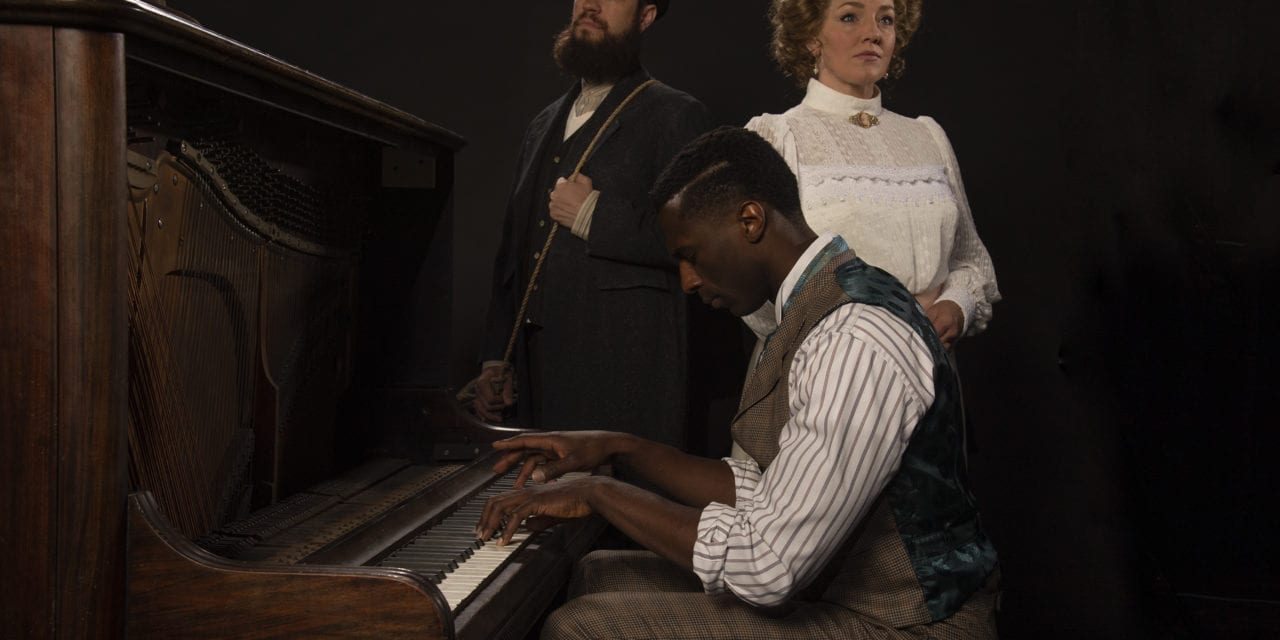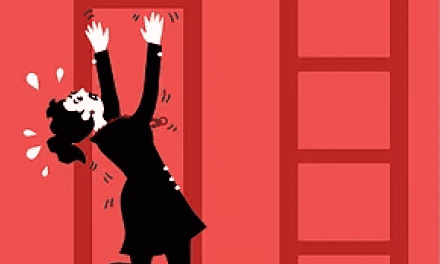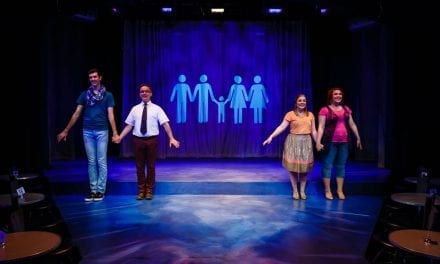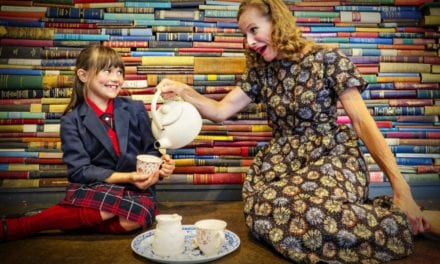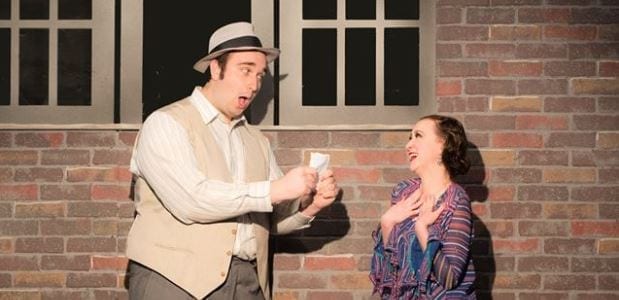CEDAR CITY — Ragtime is one of the greatest American musicals. And the production of Ragtime currently on stage at the Utah Shakespeare Festival must rank among this masterpiece’s greatest productions.

Show closes September 11, 2021.
Ragtime, based on the novel of the same name by E. L. Doctorow, tells the interweaving stories of three groups of Americans living in New York City in the early twentieth century: a wealthy white family, an African American couple (Coalhouse and Sarah) and their son, and an immigrant father (Tateh) and his daughter. The backdrop is an America that is gaining in confidence as its economic, scientific, and cultural accomplishments grow — but which still struggles to live in accordance with its founding ideals of equality. Making appearances in the historical drama are leading cultural figures of the time, including Booker T. Washington, Harry Houdini, Henry Ford, and Emma Goldman.
Ragtime is an exceptionally well crafted musical. The score (with music by Stephen Flaherty and lyrics by Lynn Ahrens) is one of the most stirring scores ever written for the stage. Few musicals can approach — let alone match — its number of sublimely gorgeous songs, including “Sarah Brown Eyes,” “Journey On,” “Gliding,” and “Wheels of a Dream.” Under the watchful eye of music director Brad Carroll, the music soars because of the cast’s perfectly executed harmonies, powerful crescendos, and clean elocution. Ragtime has rarely sounded so good, or so spectacular.

Ezekiel Andrew as Coalhouse Walker Jr. in the Utah Shakespeare Festival’s 2021 production of Ragtime. (Photo by Karl Hugh. Copyright Utah Shakespeare Festival 2021.)
Brian Vaughn‘s direction is sheer brilliance. Every scene is constructed precisely to maximize its emotional content, and Ragtime hits the highs and lows of human emotion: Coalhouse’s sorrow at Sarah’s death, Tateh’s unwavering love for his daughter, Mother’s joy in watching her son play, and so many more. Vaughn’s insight into the characters and his keen ability to translate their psychology onto the stage made Ragtime an engrossing human drama.
Vaughn’s staging is not just evocative, though. He is a virtuoso of creating three-dimensional, moving art with his actors on the stage. One strategy was to place his actors symmetrically around the stage midpoint to drive home a point. This was apparent in “Nothing Like the City,” where the placement of parent and child (Mother and her son, Tateh and his daughter) emphasized the commonalities between these two families. A larger symmetrical scene was the song “Till We Reach That Day,” where Vaughn planted his entire cast and had them sing the mighty anthem directly to the audience. The order in the staging and the actors’ firmness and determination in singing the song combined to produce an unignorable plea to audience members to work towards racial equality.

Aaron Galligan-Stierle as Tateh in the Utah Shakespeare Festival’s 2021 production of Ragtime. (Photo by Karl Hugh. Copyright Utah Shakespeare Festival 2021.)
Keenon Hooks’s masterful choreography was a boon for this production. I could have watched the “Getting Ready Rag” and “Henry Ford” sequence a dozen times without losing interest. The former song’s dancing was exuberant and active; to have it segue into the robotic, rhythmic “Henry Ford” was thrilling. “Coalhouse Demands” was almost dizzying, as the denizens of New York crisscrossed the stage in a frenzy in response to Coalhouse’s crime spree.
But Hooks’s choreography was not the only visually appealing aspect of the production. Jo Winiarski‘s set used the shape and color of a piano’s interior metal frame as inspiration for the upstage superstructure that loomed over the actors. The projections designed by Yee Eun Nam included animations, period photographs, moving cloudscapes, and ocean scenes. All were their own works of art that added beauty and variety to the scenes. Likewise, William C. Kirkham‘s lighting designs created vibrant colors on the cyclorama (sometimes used to create a silhouette effect) or bathed the stage floor in soft pale colors, my favorite of which were a subtle pattern of red, white, and blue.
However, the crowning achievement of the designs in this production of Ragtime were Bill Black‘s exquisite costumes that marked characters’ social class and background. There was no doubt that the men in starched white suits and women in lace-trimmed dresses were members of the wealthy elite of New Rochelle, while the drably dressed actors in browns and black were playing immigrants. But my favorite costumes were designed for the historical characters. Evelyn Nesbit’s sequin-studded pink vaudeville costume, Houdini’s dashing vests and red accents, and Emma Goldman’s black floor-length dress made these special characters pop out from the crowd.

Melinda Pfundstein as Mother in the Utah Shakespeare Festival’s 2021 production of Ragtime. (Photo by Karl Hugh. Copyright Utah Shakespeare Festival 2021.)
While the director, choreographer, and designers were essential to Ragtime‘s success, the actors were ultimately responsible for their performances. Without exception, the cast of Ragtime is superb. Leads, supporting actors, and ensemble are as united as the different cells in an organism, and I wish I could praise each performer by name.
Ezekiel Andrew imbues Coalhouse Walker Jr. with dignity and confidence, making the character’s turn as a leader of a small insurrection completely believable. I loved Andrew’s performance most, though, when Coalhouse was building a life with Sarah. His pleas for Sarah to return to him during “New Music” and his affection towards her and their son during “Wheels of a Dream” were endlessly enjoyable. Andrew also has a smooth, silky voice that served “Sarah Brown Eyes,” “Make Them Hear You,” and “Wheels of a Dream” well.
Melinda Pfundstein gave a multifaceted performance as Mother. Her “Goodbye, My Love” was a heartfelt farewell to her husband, while her rendition of “What Kind of Woman” was full of distress and anxiety. However, her “Back to Before” was a vocal and acting tour de force that showed how Mother had grown to become a more self-sufficient person. Pfundstein’s performance built on her earlier scenes with Father (played by Perry Ojeda) in which the two characters gradually drifted apart as Mother asserted her independence.
As Tateh, Aaron Galligan-Stierle was magnificent. Tateh’s journey from rags to riches is not easy, though, and his visceral anger mixed with disappointment about his new country created some of the best dramatic tension in the first third of the play. Aaron Galligan-Stierle’s performance was most compelling, though, in his interactions with Tateh’s daughter (played by his real daughter, Zoe Galligan-Stierle). The genuine father-daughter bond made his performance transcend Tateh’s specific time and culture and was a natural source for Tateh’s anger when his new country presented new dangers for his child.
Beyond these three leads, the actors in Ragtime were splendid in every way. Daria Pilar Redus embodies grace when playing Sarah, and “Your Daddy’s Son” was an expression of deep-seated distress that built empathy for the character. Bailey Blaise was giddy as a Evelyn Nesbitt, and she brought a splash of lightheartedness to the show in each of her scenes. Rhett Guter was the consummate showman in his portrayal of Harry Houdini. Guter breathed life and realism into even his smallest roles, like the train conductor who buys a flipbook from Tateh.
Ragtime is one of the best constructed musicals ever, and not a word of Terrence McNally‘s script is superfluous. The cast and crew of Ragtime have achieved a level of excellence rarely seen on stage. It is a privilege to see this production of Ragtime, and I will cherish my memory of this show for many years to come.

This review is generously supported by a grant from the Utah Division of Arts and Museums.

